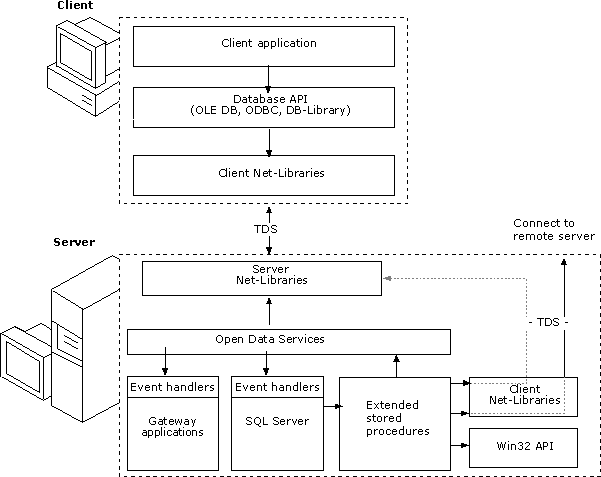
This illustration shows the architecture of Open Data Services.

Open Data Services functions as an interface between server Net-Libraries and server-based applications, such as Microsoft® SQL Server™ and extended stored procedure DLLs.
The client and server communicate through a proprietary data protocol known as tabular data stream (TDS), with Net-Libraries transporting TDS between the client and server. Open Data Services transforms the TDS protocol into an API, and provides a function library for packaging and unpackaging client requests and server responses through TDS.
Open Data Services provides a simple event-driven programming model that manages events, such as an incoming connection, an SQL request, and the sending of data back to the client. Every client connection causes Open Data Services to create a new thread to service that connection. When a request is received from the client, Open Data Services decodes the TDS elements and calls the appropriate event handler for the request.
Event handlers belong to three categories:
Each event handler calls a function within SQL Server and passes the appropriate elements of the TDS as arguments to the function. Similarly, when SQL Server needs to send information to the client, it calls an Open Data Services function that transforms the function call arguments into TDS elements, and then calls the server Net-Libraries to send the TDS to the client.